 W
WThe Kutais Governorate was one of the guberniyas of the Caucasus Viceroyalty of the Russian Empire. It roughly corresponded to most of western Georgia and most of Artvin Province of Turkey between 1878 and 1917. It was created out of part of the former Georgia-Imeretia Governorate in 1846. It also included Akhaltsikhe uyezd before its cession to the Tiflis Governorate in 1867.
 W
WAbasha is a town in western Georgia with a population of 4,941. It is situated between the rivers of Abasha and Noghela, at 23m above sea level and is located some 283 km (176 mi) to the west of Tbilisi. The settlement of Abasha acquired the status of a town in 1964 and currently functions as an administrative center of the Abasha District within the Samegrelo-Zemo Svaneti region. The headquarters of the Georgian Orthodox Eparchy of Chkondidi is also located in Abasha.
 W
WAmbrolauri is a city in Georgia, located in the western part of the country, on both banks of the Rioni river, at the elevation of 550 m above sea level. It is a self-governing city. At the same time, the city serves as the seat of the Racha-Lechkhumi and Kvemo Svaneti regional administration and of the Ambrolauri Municipality. According to the 2014 census, the city had a population of 2,047. Its area is 1.6 km2.
 W
WBaghdati is a town of 3,700 people in the Imereti region of western Georgia, at the edge of the Ajameti forest on the river Khanistskali, a tributary of the Rioni.
 W
WBatumi is the second largest city of Georgia and the capital of the Autonomous Republic of Adjara, located on the coast of the Black Sea in Georgia's southwest. It is situated in a subtropical zone at the foot of the Caucasus. Much of Batumi's economy revolves around tourism and gambling, but the city is also an important sea port and includes industries like shipbuilding, food processing and light manufacturing. Since 2010, Batumi has been transformed by the construction of modern high-rise buildings, as well as the restoration of classical 19th-century edifices lining its historic Old Town.
 W
WChkhorotsqu is a townlet in western Georgia, located in the region of Samegrelo-Zemo Svaneti and functioning as the administrative center of the homonymous district. Its population was 3,141 as of 2014.
 W
WThe Gurian Repbulic refers to an insurrection and protest movement that took place in the western Georgian region of Guria against the Russian Empire between 1902 and 1906. This rose from a revolt over land grazing rights in 1902. Several issues over the previous decades affecting the peasant population including taxation, land ownership and economic factors also factored into the start of the insurrection. It gained further traction through the efforts of Georgian social democrats, despite some reservations within their party over supporting a peasant movement, and grew further during the 1905 Russian Revolution.
 W
WJvari is a town in the northwestern Georgian province of Samegrelo-Zemo Svaneti. The town is situated at an altitude of 280 metres near the Magana River where it flows into the Enguri River; The town is divided in two with "Jvari" lying on the Zugdidi-Mestia highway, and Jvarzeni up the hill.
 W
WKharagauli is an administrative center of Kharagauli district in Georgia. It is situated on both banks of Chkherimela river in a narrow and deep gorge, 280-400m above the sea level.
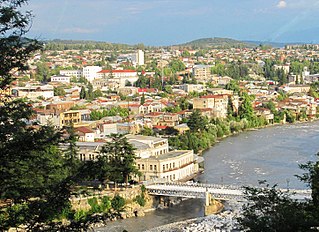 W
WKutaisi is one of the most ancient cities in the world and the third-most populous city in Georgia, traditionally, second in importance, after the capital city of Tbilisi. Situated 221 kilometres west of Tbilisi, on the Rioni River, it is the capital of the western region of Imereti.
 W
WLanchkhuti is a city in western Georgian region of Guria. It has a population of about 8,000.
 W
WLentekhi is a small town and Lentekhi District's (Raion) capital in Georgia's western region of Racha-Lechkhumi and Kvemo Svaneti, 323 km northwest to the nation's capital Tbilisi. Situated on the southern slope of the Central Caucasus, the district is a site of alpinism.
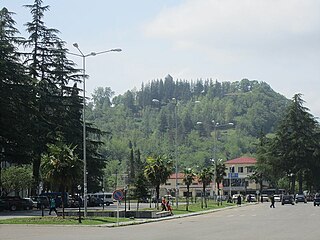 W
WMartvili is a small town in Samegrelo-Zemo Svaneti province of Western Georgia. Its monastery was Samegrelo's clerical centre in the Middle Ages. Under Soviet rule, from 1936 to 1990, it was named Gegechkori after Sasha Gegechkori, an Old Bolshevik.
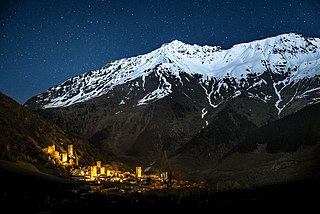 W
WMestia is a highland townlet (daba) in northwest Georgia, at an elevation of 1,500 metres in the Caucasus Mountains.
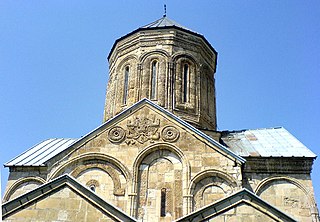 W
WNikortsminda Cathedral is a Georgian Orthodox Church, located in Nikortsminda, Racha region of Georgia.
 W
WOni is a town in Racha-Lechkhumi and Kvemo Svaneti region (mkhare), Georgia. Historically and ethnographically, it is part of Racha, a historic highland province in western Georgia. The town also serves as an administrative center of the Oni district (raioni).
 W
WThe Ozurget Uyezd was an uyezd (county) of the Kutais Governorate of the Caucasus Viceroyalty of the Russian Empire. It roughly corresponds to modern-day Guria. It was created in 1846 and lasted until the formation of the Democratic Republic of Georgia in 1918, when the historic name Guria was restored.
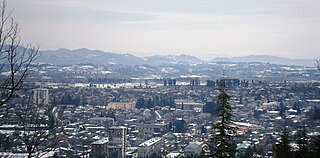 W
WOzurgeti is the capital of the western Georgian province of Guria. It was formerly known as Macharadze or Makharadze. It is a regional center of tea and hazelnut processing.
 W
WSachkhere is a town at the northern edge of the Imereti Province in Western Georgia. It is the center of the Sachkhere Municipality.
 W
WSenaki is a town in Samegrelo-Zemo Svaneti region, western Georgia. It is located at around 42°16′8″N 42°4′45″E between the rivers Tekhura/i and Tsivi, at an elevation of 28–38 meters above sea level. Senaki is the center of the Senaki Municipality and serves as a residence of Metropolitans of Senaki and Ckhorotskhu Eparchy of the Georgian Apostolic Autocephalous Orthodox Church.
 W
WTerjola is a town in Imereti, Georgia, serving as an administrative center of the homonymous district.
 W
WTsageri is a town in Georgia, located in Racha-Lechkhumi and Kvemo Svaneti region in the west of the country and serving as an administrative center of the homonymous district.
 W
WTsalenjikha is a town in Samegrelo-Zemo Svaneti region of western Georgia with the population of 6,388 (2014). It is located on the river Chanistsqali. Historically, Tsalenjikha functioned as one of the residences of the Dadiani princess of Mingrelia and a bishopric seat with a medieval cathedral of the Savior.
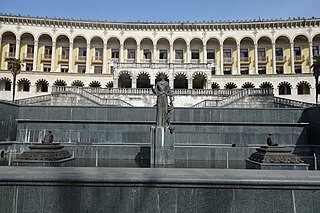 W
WTskaltubo is a spa resort in west-central Georgia. It is located at around 42°20′23″N 42°35′57″E. It is the main town of the Tsqaltubo Municipality of the Imereti province. It is famous for its radon-carbonate mineral springs, whose natural temperature of 33–35 °C (91–95 °F) enables the water to be used without preliminary heating.
 W
WVani is a town in Imereti region of western Georgia, at the Sulori river, 41 km southwest from the regional capital Kutaisi. The town with the population of 3,744 (2014) is an administrative center of the Municipality of Vani comprising also 40 neighbouring villages.
 W
WZestafoni or Zestaponi is the administrative center of Zestafoni District in Western Georgia. Zestafoni is the center of an ancient, historical part of Georgia – Margveti, which is a part of Imereti province. Zestafoni is the center of Margveti's Eparchy of the Georgian Orthodox Church. Zestafoni is situated in the furthest east of the Colchis Plateau, and is built on both banks of the river Kvirila.
 W
WZugdidi is a city in the western Georgian historical province of Samegrelo (Mingrelia). It is situated in the north-west of that province. The city is located 318 kilometres west of Tbilisi, 30 km from the Black Sea coast and 30 km from the Egrisi Range, at an elevation of 100–110 metres above sea level. Zugdidi is the capital of the Samegrelo-Zemo Svaneti region, which combines Samegrelo (Mingrelia) and upper part of Svaneti, and the center of the Zugdidi Municipality within.
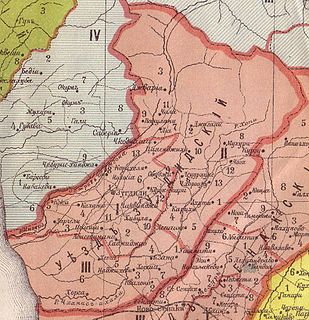 W
WThe Zugdidi Uyezd was an uyezd (county) of the Kutais Governorate of the Caucasus Viceroyalty of the Russian Empire. It was created in 1846 and lasted until the formation of the Democratic Republic of Georgia in 1918.